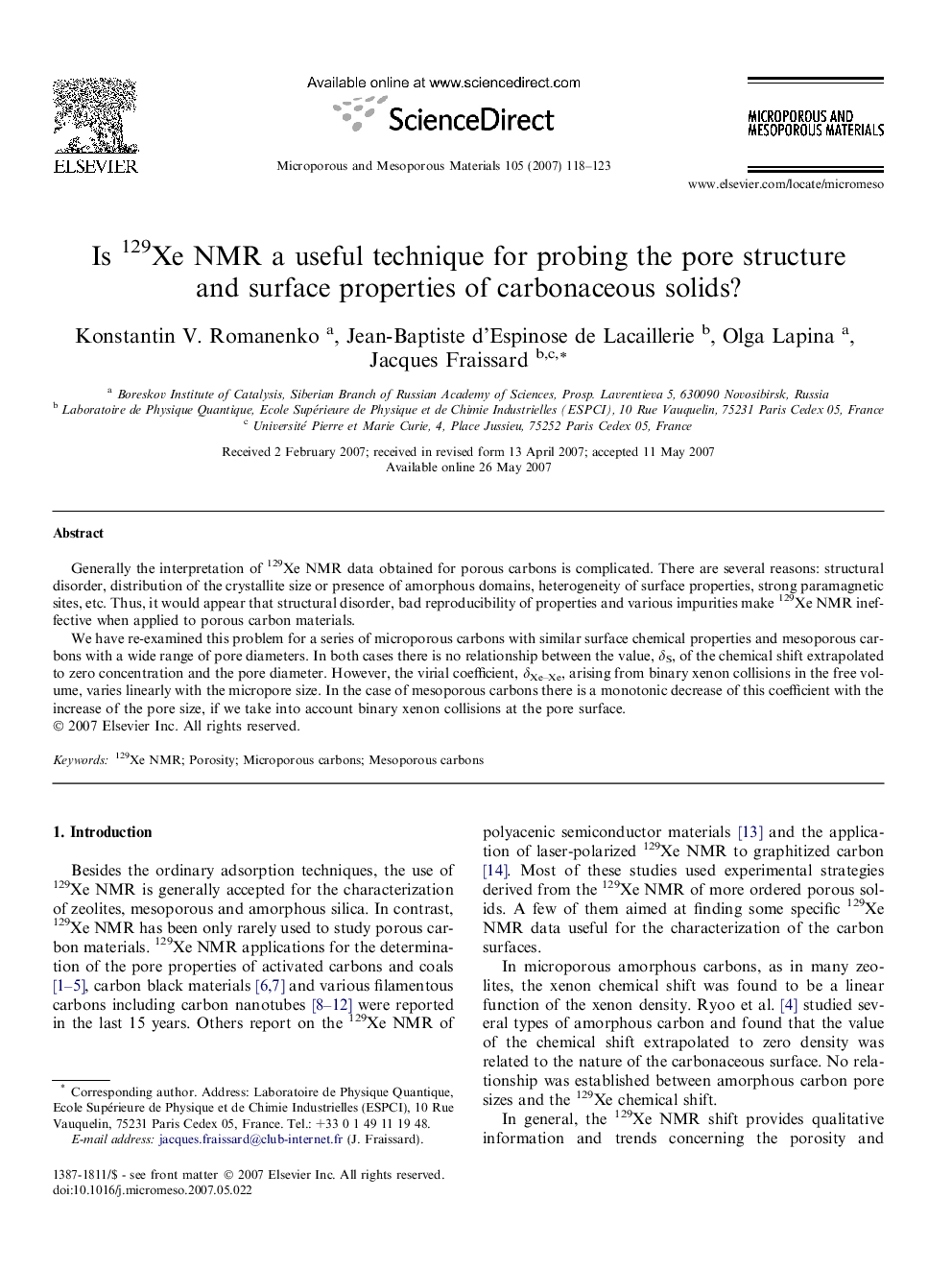| Article ID | Journal | Published Year | Pages | File Type |
|---|---|---|---|---|
| 77105 | Microporous and Mesoporous Materials | 2007 | 6 Pages |
Generally the interpretation of 129Xe NMR data obtained for porous carbons is complicated. There are several reasons: structural disorder, distribution of the crystallite size or presence of amorphous domains, heterogeneity of surface properties, strong paramagnetic sites, etc. Thus, it would appear that structural disorder, bad reproducibility of properties and various impurities make 129Xe NMR ineffective when applied to porous carbon materials.We have re-examined this problem for a series of microporous carbons with similar surface chemical properties and mesoporous carbons with a wide range of pore diameters. In both cases there is no relationship between the value, δS, of the chemical shift extrapolated to zero concentration and the pore diameter. However, the virial coefficient, δXe–Xe, arising from binary xenon collisions in the free volume, varies linearly with the micropore size. In the case of mesoporous carbons there is a monotonic decrease of this coefficient with the increase of the pore size, if we take into account binary xenon collisions at the pore surface.
